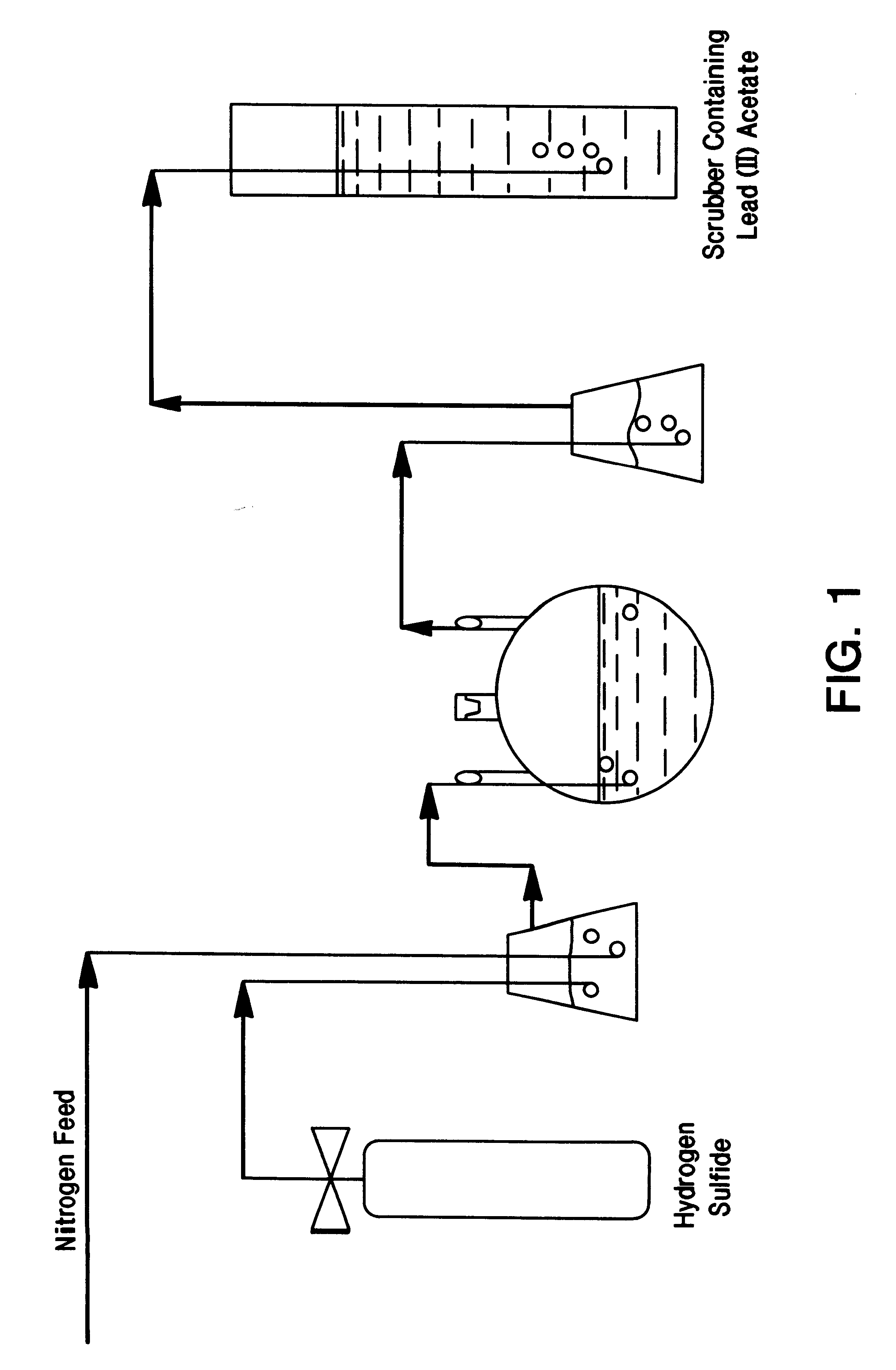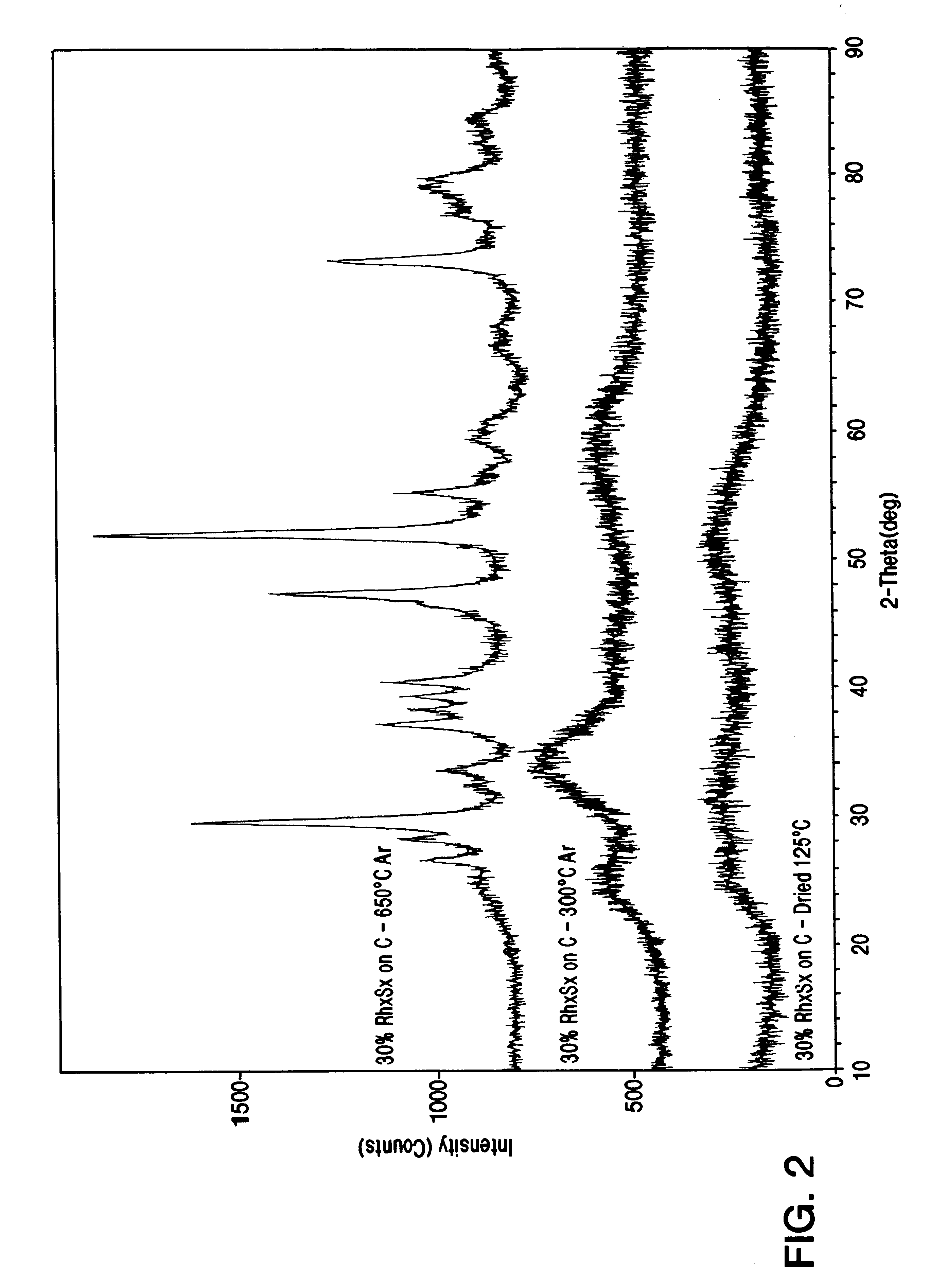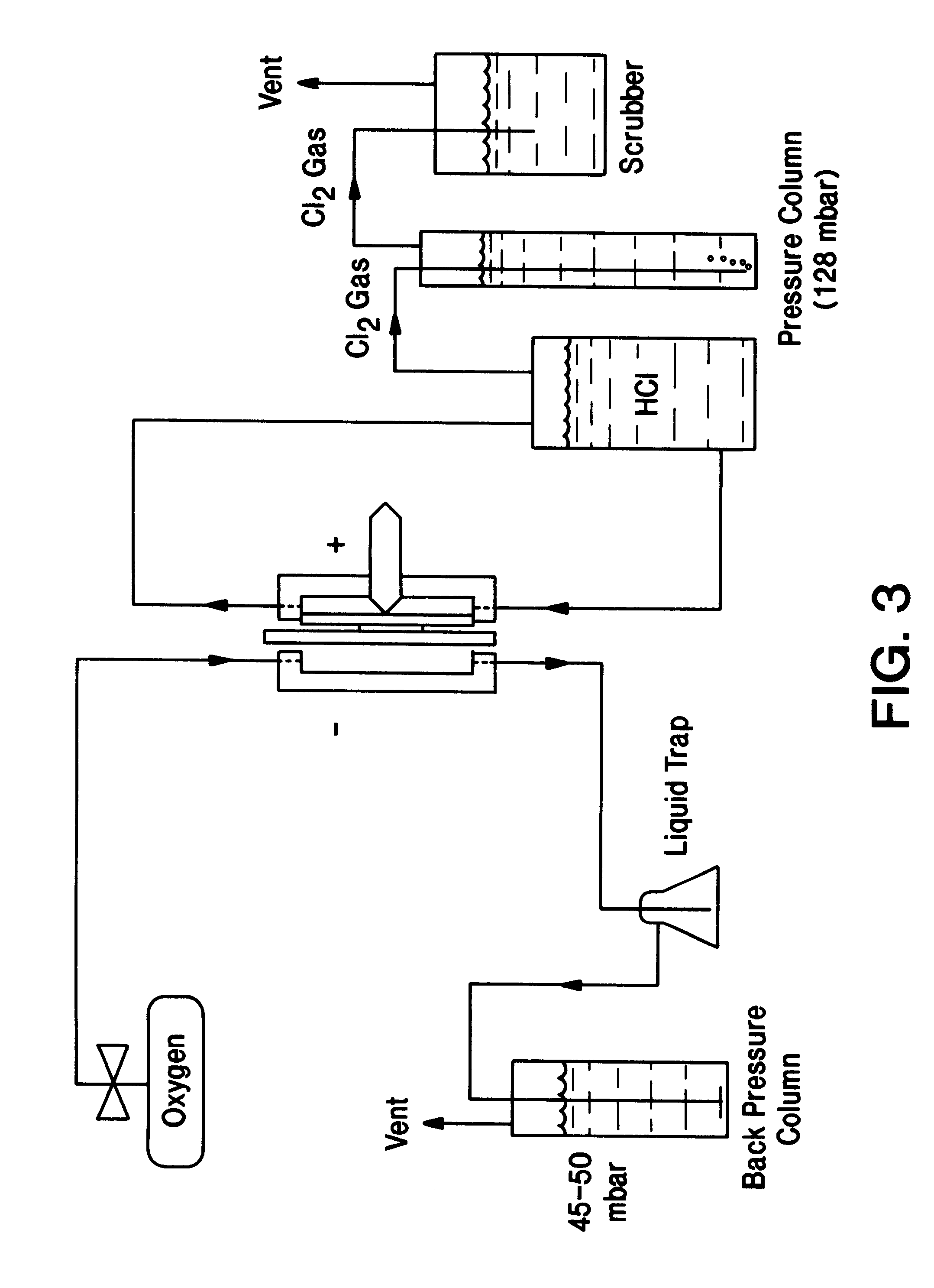Process for the electrolysis of technical-grade hydrochloric acid contaminated with organic substances using oxygen-consuming cathodes
a technology of hydrochloric acid and oxygen-consuming cathode, which is applied in the field of electrolysis of technical-grade hydrochloric acid contaminated with organic substances using oxygen-consuming cathodes, can solve problems such as valves and pumps, and achieve the effect of avoiding even small increases in operating voltag
- Summary
- Abstract
- Description
- Claims
- Application Information
AI Technical Summary
Benefits of technology
Problems solved by technology
Method used
Image
Examples
example 2
8 grams of unsupported rhodium sulphide were prepared by the following procedure: 12.1 grams of RhCl.sub.3.xH.sub.2 O (39.88% given as rhodium metal) were dissolved in 700 ml of de-ionised water, without any pH adjustment. Hydrogen sulphide gas was then sparged through the slurry at ambient temperature using nitrogen as a carrier gas, according to the scheme of FIG. 1. The mixture has been allowed to react as described for 4 hours. Upon completion of the reaction, nitrogen was purged through the system to remove residual H.sub.2 S. The remaining solution was vacuum filtered to isolate the solids, which were then washed with de-ionised water and dried at 125.degree. C. to a constant weight. The resulting catalyst cake was finally ground to a fine powder and subjected to 650.degree. C. under flowing argon for two hours.
example 3
The catalysts of all the above reported examples, along with commercially available platinum on Vulcan XC-72 (for example from E-TEK, Inc.), can be utilised in several different configurations. The catalyst of this invention is not limited by the structure of the gas diffusion electrode: for instance, in the present case, each catalyst of the above examples and comparative examples was incorporated in four different types of electrode structure, thereby obtaining sixteen different samples, according to the following procedures:
a) ELAT: A web of carbon cloth with a warp-to-fill ratio of unity and about 25 to 50 yams per inch, and a 97-99% of carbon content was selected from a commercially available product with a thickness of 10 to 15 mils. Carbon cloth with a thickness of 5 to 50 mils could have advantageously been used for this purpose. A mixture of fluorinated polymer (polytetrafluoroethylene, P.T.F.E., commercialised by DuPont under the trademark Teflon.RTM.) and Shawinigan Acety...
example 4
Prior to incorporation in gas diffusion electrodes, the resistance of this inventon's catalyst to corrosive media such as boiling solutions of HCl / Cl.sub.2 can be simply determined and compared to prior art catalysts as well as rhodium sulphide prepared at various temperatures. One to five grams of the catalysts of Table 1 were placed in a 250 ml beaker containing 130 g / l chlorine-saturated HCl and heated to boiling. The formation of a deep colour indicates the dissolution of the metal from the catalyst, thus providing evidence for whether the catalyst would be appropriate for use in systems for the recovery of chlorine from aqueous HCl solutions.
From this Table it is evident that in order to produce a stable form of rhodium sulphide, some heat treatment step is mandatory. It is also possible to conclude that not all sulphides of precious metals are stable in these conditions, and furthermore, in view of the instability of supported platinum sulphide, it is surprising to find suppor...
PUM
| Property | Measurement | Unit |
|---|---|---|
| operational voltage | aaaaa | aaaaa |
| operational voltage | aaaaa | aaaaa |
| operating temperature | aaaaa | aaaaa |
Abstract
Description
Claims
Application Information
 Login to View More
Login to View More - R&D
- Intellectual Property
- Life Sciences
- Materials
- Tech Scout
- Unparalleled Data Quality
- Higher Quality Content
- 60% Fewer Hallucinations
Browse by: Latest US Patents, China's latest patents, Technical Efficacy Thesaurus, Application Domain, Technology Topic, Popular Technical Reports.
© 2025 PatSnap. All rights reserved.Legal|Privacy policy|Modern Slavery Act Transparency Statement|Sitemap|About US| Contact US: help@patsnap.com



